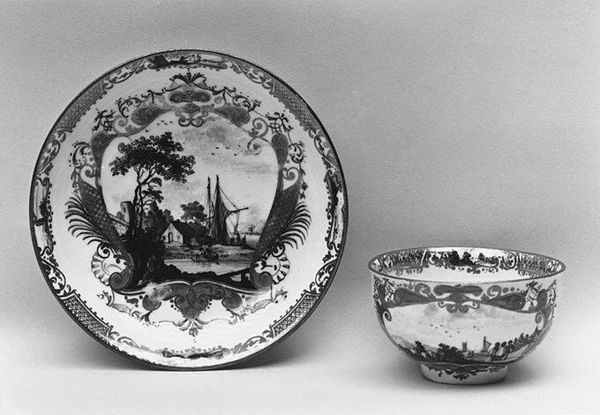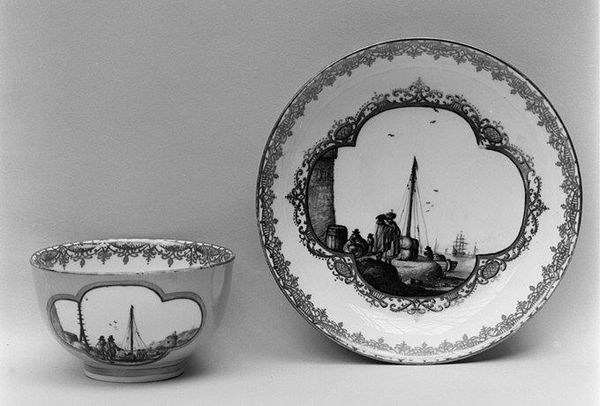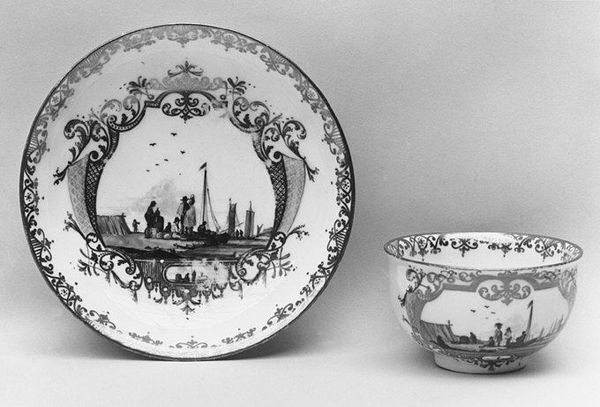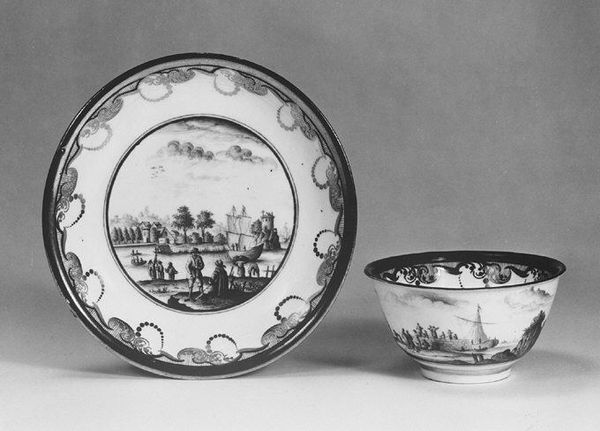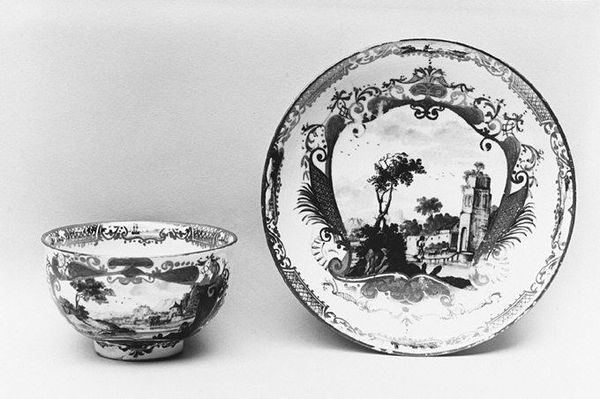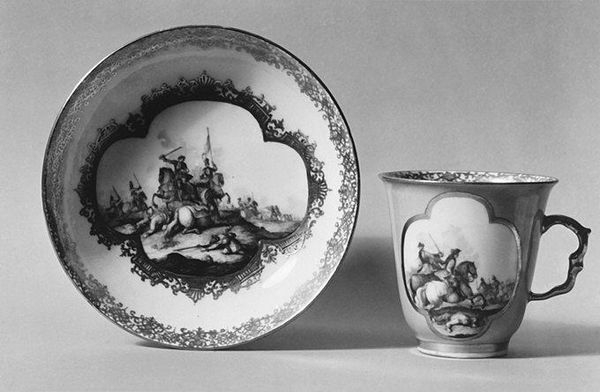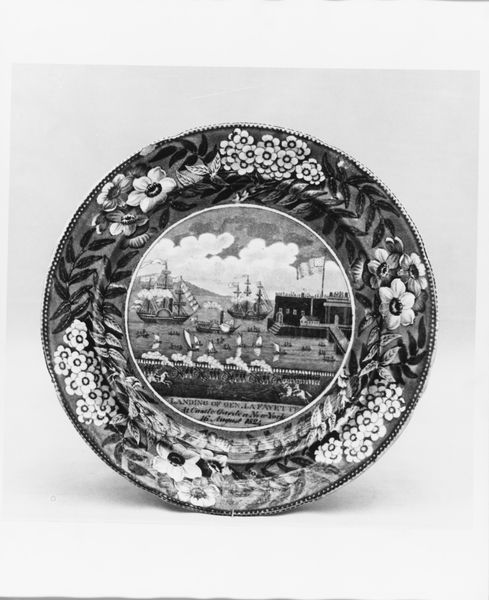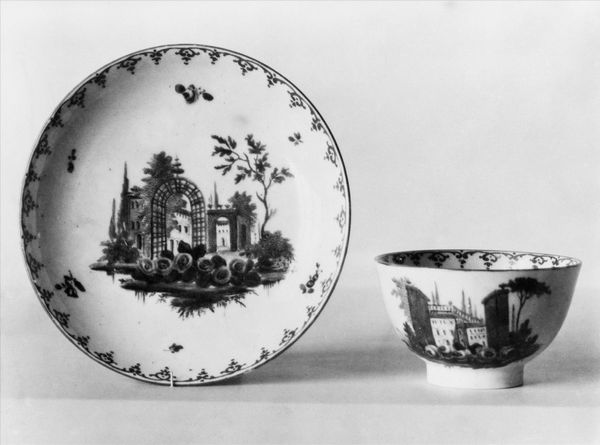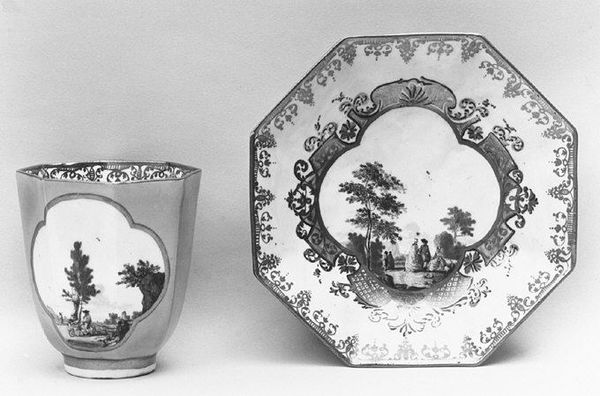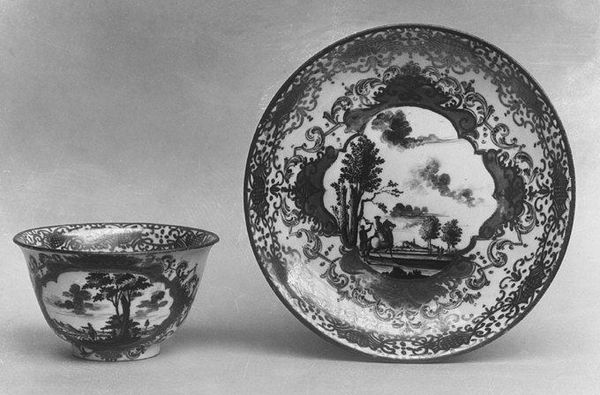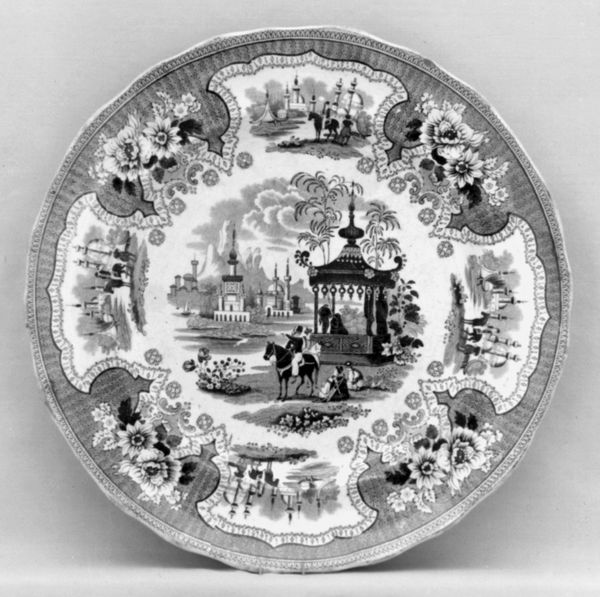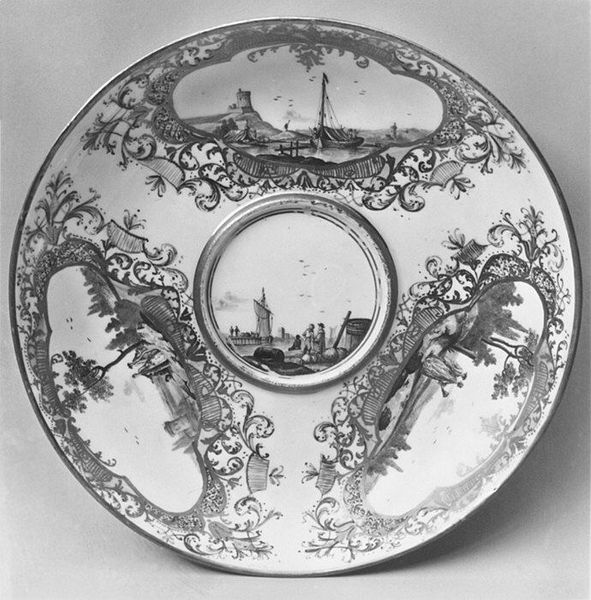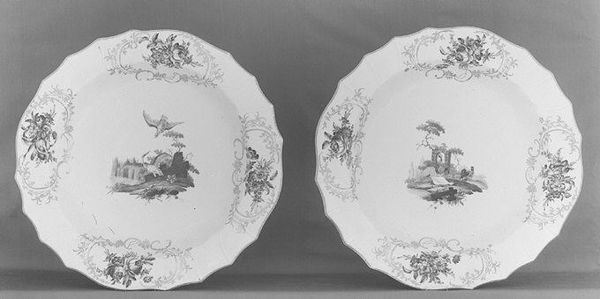
ceramic, porcelain, sculpture
#
sculpture
#
landscape
#
ceramic
#
flower
#
porcelain
#
sculpture
#
decorative-art
#
rococo
Dimensions: Overall (teabowl .179): 1 7/8 × 3 1/4 in. (4.8 × 8.3 cm); Overall (teabowl .181): 1 7/8 × 3 3/16 in. (4.8 × 8.1 cm); Diameter (saucers .180, .182): 5 1/8 in. (13 cm)
Copyright: Public Domain
Curator: What strikes me immediately about this pair of teabowls and saucers is their quiet formality, a delicate stage setting for a ritual of refreshment. The monochromatic scenes almost feel like glimpses into memory. Editor: These pieces, crafted between 1715 and 1750 by the Meissen Manufactory, represent the height of Rococo elegance in porcelain. I see in them a visual embodiment of the era's aristocratic leisure, but also its global implications. Curator: Tell me more. The decorative schemes are so visually arresting with the transfer-printed landscapes… the bridges and architectural ruins! The symbolism of the ruin is often about the transitory nature of human endeavors and inevitable cultural changes. Does that resonate with you here? Editor: Absolutely. And it speaks to a certain detached colonial gaze. The picturesque landscapes they depict, framed so neatly for a European audience, romanticize foreign lands while eliding the realities of exploitation and power dynamics. Who gets to relax with tea in such finely wrought vessels, and at whose expense? Curator: It’s true; these objects, beautiful as they are, become cultural carriers. What were once innovative production methods become standardized, the landscapes they depict becoming nostalgic tropes of class, trade, and exoticized culture. The landscapes function like coded languages speaking of social standing and worldliness. Editor: Exactly. Looking at the Rococo details, you almost sense an attempt to sanitize and control nature itself, turning unruly landscapes into manageable, reproducible scenes. It's a means to reinforce structures of dominance and a controlled version of cultural exchange. Curator: Though even today, these kinds of images can unlock powerful feelings about human influence in landscape… and I’m struck again by that monochromatic restraint! This feels deeply evocative and psychological. Editor: These Meissen pieces remind us that even the most seemingly innocent objects carry profound social and historical weight. It is essential that we examine their beauty with a critical and inquisitive eye. Curator: I agree entirely. Thank you for pointing that out; it’s reshaped my viewing considerably. Editor: My pleasure. I will perhaps go and make a cup of tea now!
Comments
No comments
Be the first to comment and join the conversation on the ultimate creative platform.
